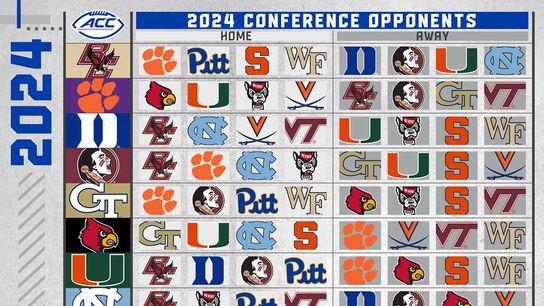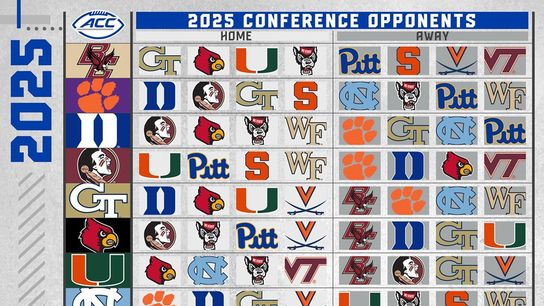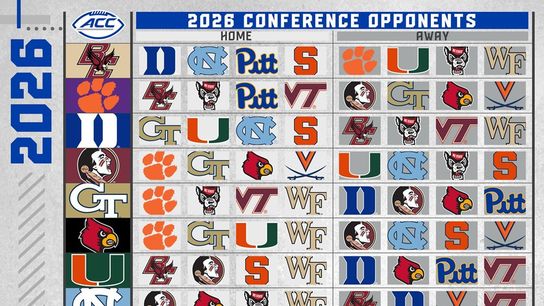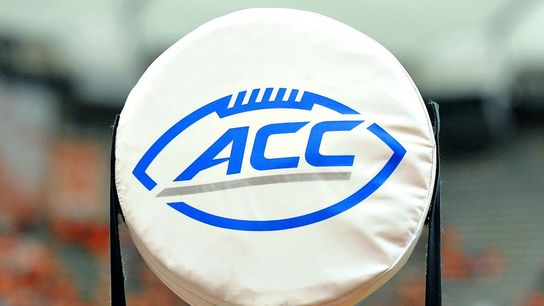The ACC became the latest conference to scrap divisions, beginning with the 2023 season, the conference announced on Tuesday.
The change comes in response to the NCAA altering its requirements for conferences to hold conference championship games. Beginning with the 2023 season, leagues no longer need to play round-robin schedules or split into divisions to hold title games, as is currently required. The Pac-12 was the first conference to scrap divisions, making the announcement hours after the NCAA changed its rules back in May.
Most of the focus since the rule change has been on the SEC (and the Big Ten), but the ACC had a similar, dissatisfying structure as the SEC: 14 teams, two divisions, eight games.
Starting next season, the ACC will move to a 3-5-5 structure. Each team will play three opponents annually and the remaining 10 on a semi-annual basis. This approach allows each school to play all 13 ACC opponents every other year, and to host all 13 ACC opponents at least once every four years. The structure also keeps the conference schedule at eight games, preserving maximum opportunities to play Notre Dame and key non-conference opponents like Florida (Florida State), Georgia (Georgia Tech), South Carolina (Clemson) and Kentucky (Louisville.)
The three annual rivalries break down as follows:
Boston College: Miami, Pitt, Syracuse
Clemson: Florida State, Georgia Tech, NC State
Duke: North Carolina, NC State, Wake Forest
Florida State: Clemson, Miami, Syracuse
Georgia Tech: Clemson, Louisville, Wake Forest
Louisville: Georgia Tech, Miami, Virginia
Miami: Boston College, Florida State, Louisville
North Carolina: Duke, NC State, Virginia
NC State: Clemson, Duke, North Carolina
Pitt: Boston College, Syracuse, Virginia Tech
Syracuse: Boston College, Florida State, Pitt
Virginia: Louisville, North Carolina, Virginia Tech
Virginia Tech: Pitt, Virginia, Wake Forest
Wake Forest: Duke, Georgia Tech, Virginia Tech
The top two teams in the standings will then meet in the ACC Championship. The conference had a trial run at this structure in the 2020 season, which ended with a rematch of Clemson and Notre Dame. Crucially, both teams one one game, and both reached the College Football Playoff that season.
“The future ACC football scheduling model provides significant enhancements for our schools and conference, with the most important being our student-athletes having the opportunity to play every school both home and away over a four-year period,” said ACC Commissioner Jim Phillips, Ph.D. “We appreciate the thoughtful discussions within our membership, including the head football coaches and athletic directors. In the end, it was clear this model is in the best interest of our student-athletes, programs and fans, at this time.”
The conference also released home/away opponents for the four following seasons.



Below is a rundown of where each conference stands today and how it plans to change (or not) in 2023 and beyond. All 10 FBS conferences stage championship games.
American
2021: 11 teams, no divisions, eight games
Future: 14 teams, no divisions, eight games
ACC
2021: 14 teams, two divisions, eight games
Future: 14 teams, no divisions, eight games
Big Ten
2021: 14 teams, two divisions, nine games
Future: 14 teams, ???, ???
Big 12
2021: 10 teams, no divisions, nine games
2023-24: 14 teams, ???, ???
Future: 12 teams, ???, ???
Conference USA
2021: 14 teams, two divisions, eight games
2022: 11 teams, no divisions, eight games
Future: Nine teams, no divisions, eight games
MAC
2021: 12 teams, two divisions, eight games
Future: 12 teams, two divisions, eight games
Mountain West
2021: 12 teams, two divisions, eight games
Future: 12 teams, no divisions, eight games (talk of going to nine)
Pac-12
2021: 12 teams, two divisions, nine games
Future: 12 teams, no divisions, nine games
SEC
2021: 14 teams, two divisions, eight games
Future: 16 teams, ???, ???
Sun Belt
2021: 10 teams, two divisions, eight games
Future: 14 teams, two divisions, eight games
As always, stay tuned to The Scoop for the latest.
